War, scandal, clickbait, sensationalism — how are we to respond?
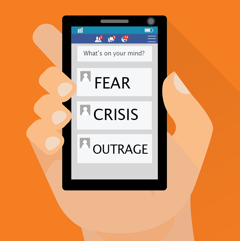
When clickbait lures and controversy sells, what does it mean to read with the Bible in one hand and the newspaper – or our newsfeeds – in the other?
In this new series we explore a question Gareth Higgins raises in the May issue of Sojourners: How do we unlearn our own attraction to scandal and sensationalism while still working for social change? READ Higgins’ essay "A Newsfeed of Fear" and join the conversation online using the hashtag #FeedFear.
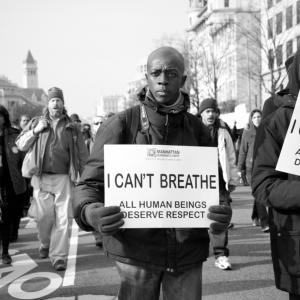
In “A Newsfeed of Fear” (Sojourners, May 2015), Gareth Higgins argues that our newsfeeds often scare us into believing the world is getting worse when the world is actually getting better.
Although I resonate with a call for calm in an age of violent clickbait, we cannot discuss “A Newsfeed of Fear” without talking about race in post-Ferguson America. When we say our newsfeeds are filled with fear, we need to think more about which newsfeeds are making us afraid and whose fear we’re discussing.
For example, when Higgins bemoans “horrifying, brutal videos, edited for maximum sinister impact,” perhaps a reference to the all-too-familiar videos of ISIS hostages, I actually envision Walter Scott and Eric Garner and Tamir Rice and all the others. While the videos produced by ISIS are fearmongering propaganda intended to provoke, we wouldn’t want to call newsfeeds unmasking the reality of police brutality a corrupting influence on our society, right?
And in this context Higgins’ claim that the world is actually getting better is especially dangerous. Advising police brutality whistle blowers to keep their violent videos to themselves because they paint “too cynical a portrait of the improved race-relations in our society” would border on the insane.
The problem with media is not so much that it makes us fearful, but that it makes certain people fear certainthings and certain other kinds of people. It makes my mom fear that her granddaughters will get kidnapped in a very safe neighborhood. It makes me, a white guy, fear walking past black men in hoodies at night, and not white guys in polos. What you fear depends on where you’re standing and what you’re watching.
From where Higgins is standing, “our culture has been hoodwinked by the idea that we’re living in the center of crisis, when actually we’re in the midst of the evolution of hope.” In his eyes, our culture cultivates a false sense of constant terror.
But we need to ask: whose culture? When I read #BlackLivesMatter activists, they seem to say: “no, most people have been hoodwinked by the idea that ‘our’ (meaning American) culture is living in the midst of the evolution of hope, when actually ‘a certain (black) culture’ is indeed in the center of crisis.” So who’s right about the value of violent, fearful newsfeeds?
It depends on where you’re standing and what you’re watching.
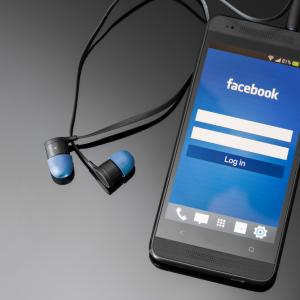
In 1990, my father and pregnant mother packed up their life in suburban Illinois, bundled their four young children (including me) onto a plane, and landed in Romania to teach on a grant at the University of Bucharest.
The country was in the throes of revolution following the execution of ousted dictator Nicolae Ceaușescu, and the transfer of power was by no means tidy or complete. The Securitate — one of the most brutal secret police forces in the world — proved difficult to shut down. All our neighbors operated under the assumption that their every move continued to be watched (one friend had taken apart his typewriter by hand and hid it so he could answer honestly that he did not keep a typewriter in the house). Being American, my parents were told to expect our apartment to be bugged.
Freedom had come, but the systems of omnipresent control proved psychologically hard to shake.
The specter of surveillance is an insidious tool. In the 1790s, British philosoper Jeremy Bentham developed a centralized prison model called the panopticon, in which every occupant is visible to a single guard. Most models, since adapted by prisons and schools around the world, leave open the possibility that there is no supervisor watching after all. Whether there is isn't the point — the mere promise of one is enough to coerce significant behavior change. Being constantly observable is the trap.
These days, Americans don’t need a formative year spent in post-soviet Romania to feel uneasy about omnipresent surveillance. Edward Snowden’s revelations of massive secret surveillance programs operating under the NSA, with enormous access to private data from citizens not suspected of terrorism or criminal wrongdoing, rocked our understandings of data privacy and civil liberty. Now, as then, it’s reasonable to worry that we’re being watched.

Lately I’ve noticed that the “prayers of the people” at my church are beginning to sound like the sixth seal of the Book of Revelation has been broken and the world is about to implode. While I'm glad we pray about important topics in global affairs like Iran's nuclear program or ISIS, it’s easy to feel tense when folks start rattling off one shocking headline after another. I want to be engaged with the things in our world that need change, but I wonder to myself: Where is hope? Where is the good news? It seems like our message has become: “Be afraid. Be very afraid. Oh … and Jesus.”
In “A Newsfeed of Fear,” (Sojourners, May 2015) Gareth Higgins writes: “Our culture has been hoodwinked by the idea that we’re living in the center of a crisis when actually we’re in the midst of an evolution of hope.”
Scandal and sensation are nothing new to the media, but I think Higgins is on to something: with our newsfeeds delivering a daily stream of scandals, shootings, and outrage to our pockets and wrists it seems easier to believe that our world is falling apart. And when these stories lack context, follow-up, or conversation, one crisis can just seem to flow into another.
In a recent conversation with my father-in-law, Elly Alboim, a veteran journalist and professor of journalism, he admitted that news media can paint “an unrelentingly bleak view of the world.” He noted how news outlets often focus on inexplicable tragedies (plane crashes), threats to health and wellness (U.S. fear over Ebola), and the bizarre (take your pick), all of which reinforce our sense that we’re living on the edge of global apocalypse.
Alboim also explained that people typically process the news in terms of threats. Each morning they perform their own kind of threat assessment, beginning with the most immediate threat — the weather — moving on to morning traffic and eventually, all the way to news of global terrorism.
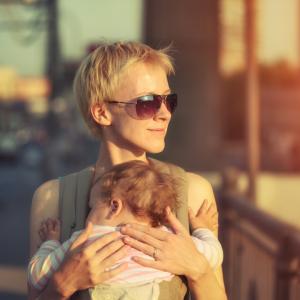
As a journalist, editor, media professional, and all-around digital addict, I believe the ever-present “newsfeed of fear” engenders a very real threat to our personal well-being. But is it possible that it also harbors startling implications for our behavior and even our relationships?
Reflecting on Gareth Higgins’ words on “availability heuristic” (“A Newsfeed of Fear,” Sojourners, May 2015) — basically, that our fear of bad things happening is based on how many examples of those bad things we can easily bring to mind — the first thought that entered my head was my constant command to my 1.5-year-old, “Hold Mommy’s hand!”
Of course, we live in the middle of Washington, D.C., on a high-traffic street with no front yard to speak of; any time we leave the house, I have to go on high alert lest my newly running toddler dart off the sidewalk. But when I dug a little deeper to explore in what other circumstances my danger-Will-Robinson-danger alarm has gone off, I was forced to admit that it can occur basically any time she’s in my care.
When I became a parent, it inexplicably became frightening that my house didn’t have a mudroom — or anything save a single slab of lockable wooden door separating our warm and cozy home from the terror that existed beyond it. Suddenly, a 5-degree rise or drop in my kid’s nursery — indicated by her video monitor, which also plays soothing lullaby music — became cause to purchase a window AC unit and an electric heater despite our house’s central air and heat. I contemplated buying the mattress pad that sounds an alarm if it detects baby has stopped breathing (because SIDS), but opted against it since I was already checking on her every five minutes anyway.
First, let me say, I think all of these are good and normal (right?) reactions to first-time parenthood, and I have since calmed the hell down. But they can also be artificially generated behavioral responses to the digital world we live in, enhanced by mommy blogs and parenting books warning us of the dangers of crib bumpers (27 accidental deaths/year) and window blind cords (about 7 deaths in 2014). And don’t even get me started on #PregnancyFeedFear — somewhere around 6 months in, you give up and just eat the dang sushi and deli meat.
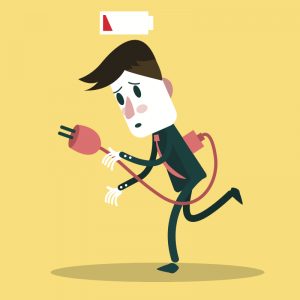
It was difficult to be a Hoosier last week, particularly as one caught in the crossfire between Indiana’s narrow-minded lawmakers on the Right and the rage of the political Left. The battle cry “Boycott Indiana!” reverberated through social media channels even though many Hoosiers vehemently oppose the discriminatory new RFRA law. My very own neighborhood mourned one of the casualties of this battle: a major economic development that was canceled when the funders heard about RFRA.
It was amidst this firestorm that I read Gareth Higgins’ superb essay “A Newsfeed of Fear” (Sojourners, May 2015). Given my present frame of mind, Higgins didn’t have to twist my arm to convince me that fear was a prevalent factor in the version of reality that we are fed through media channels.
Higgins’ essay reminded me of the prophetic hope of the Israelite people that is repeated throughout the Hebrew Bible: “None shall make them afraid.” If God’s people are indeed shaped by a perfect love that casts out fear, how then, I wondered, do we begin embodying an alternative to the newsfeed of fear in the way that we read, tell, and embody stories?
Higgins suggests that the answer to this question involves practicing the virtues of context, compassion, attention to detail, and pause. Space didn’t allow Higgins to elaborate on these virtues, so I would like to suggest my own interpretation and offer an additional fifth: gratitude.

There’s an old adage in journalism that if it bleeds, it leads. It sounds kind of savage and it’s often that principle people quip when complaining about excessive violence in the news.
That criticism isn’t wrong. Just watch 10 minutes of nightly news, and you’ll probably see nothing but murders and robberies, as if that’s the only thing that happens on a daily basis.
But what I think we forget when criticizing the bleed/lead principle is the inherent value it places on human life. The way I learned it in journalism school, “if it bleeds, it leads” means that people matter. It means that the loss of human life should never be something we consider a banality and that if there’s bloodshed, we, as journalists, have an obligation to report it.
In a perfect world, that would work. (Well, actually, in a perfect world, there would be no bloodshed for journalists to report, but you know what I mean.) But the problem that Gareth Higgins identifies in “A Newsfeed of Fear” (Sojourners, May 2015) is not so much the excessive coverage of suffering, but the callous coverage of it.
Instead of promoting the sanctity of life as I think it was originally intended, media coverage of crime and violence has been twisted into a formulaic script that serves only to create the must-watch, must-read news that brings in advertising dollars. And it can be hard to stomach that much disingenuousness.
Yet the solution is not a positive-news only model. There are media outlets — largely Christian ones — trying this, but I don’t think this approach adequately addresses what’s wrong with the mainstream media. For one thing, it does nothing to fix the problem of formulaic, disingenuous stories. People can fake happiness, too, you know. Furthermore, there are times when we actually need more bad news — like, for example, when black women disappear or when migrant farmworkers are being abused.
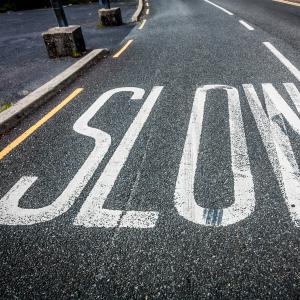
The hum of 24-hour “news” drones on in the background most of my days. I’m not quite sure what television media's version of “Breaking” means anymore, though what accompanies it is closer to this Saturday Night Live spoof than real life.
Something is always “breaking.” And someone is always responding. We feel the need to get there first, to offer the most unique point of view, to lend our “expertise,” or to speak on behalf of our [fill-in-the-blank]. Organization? Generation? Gender? Or some cross-section of all of the above?
I know. I can definitely be part of the problem, and in this, I attempt my confession — sometimes my judgment fails me and I fall into the trap of the sensationalized newsbyte. I’m the web editor of a publication — meaning, I solicit, edit, sometimes even write some of these responses, of which there are a variety.
We have the “first response.” They are those who get there immediately. On television, these might come with the Impact font-ed “Exclusive,” or even “First to Report” (gross). Sometimes they just recount the events. Often, they will include — whether by slant storytelling or outright commentary — their reaction to said events.
Then there’s the “second-day response.” More nuanced, and typically with corrected “facts” that first responders didn’t mind repeating ad nauseam the day before, these reports put the events into greater historical context — or at least whatever context the writer could whip together from Wikipedia entries and closest possible “expert.” (We have a missing plane? Look, here’s a flesh-and-blood PILOT to explain what happened.)
From there, you get the out-and-out commentary. The “here’s my take,” or “this is whose side I’m on.” Rarely unique, though under the constant illusion of specialness, these commentaries attempt to stake out ground for a person or group of people. This happened, here’s how it happened, and here’s where I [we] stand on it.
Inevitably, you’ll then get the response to the response: How dare you stand there! She’s missing the whole point of [news-making event].
And on it goes.